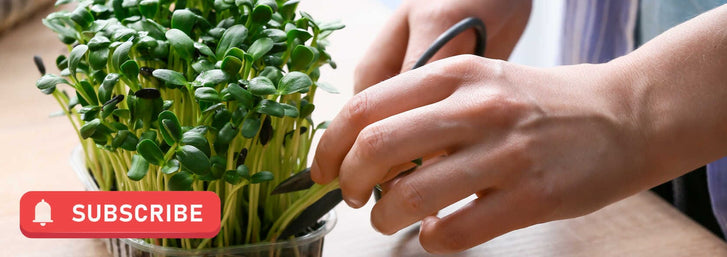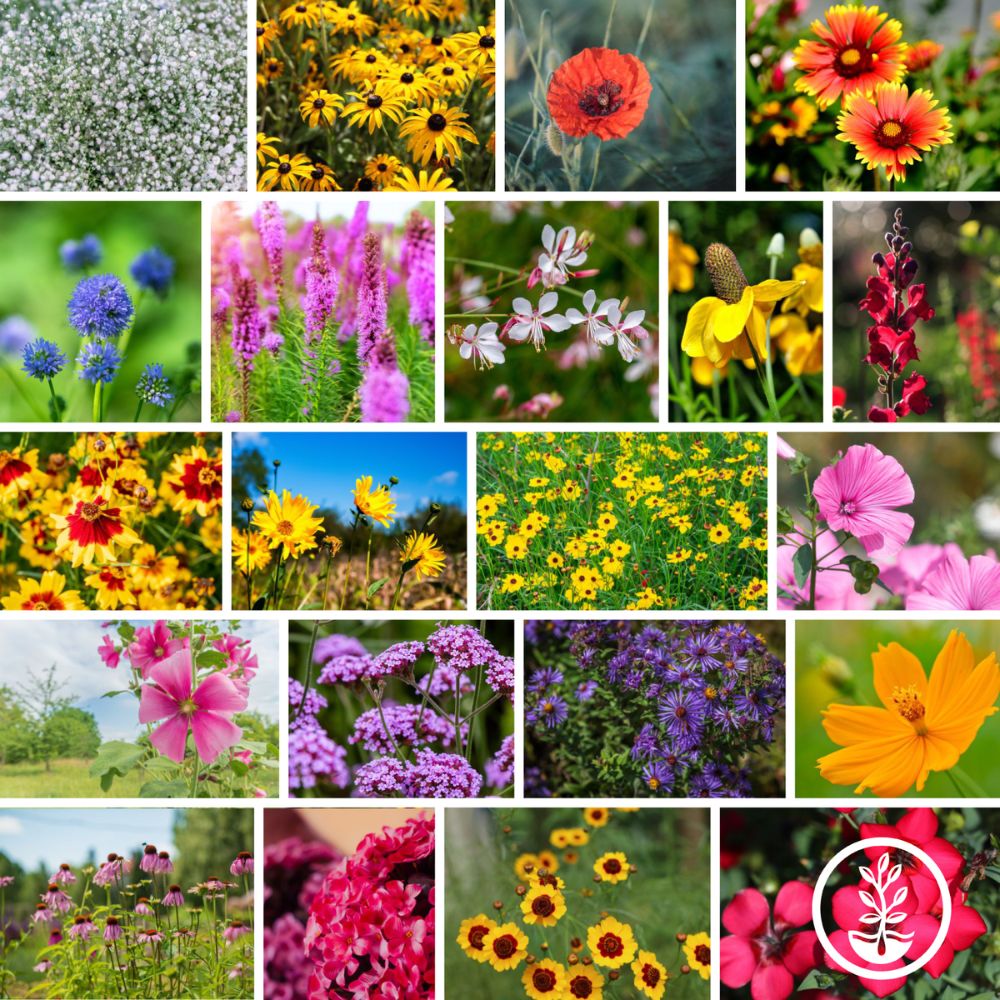
Ashleigh Smith

 |
Written By Lara Wadsworth |
The Southeastern United States is a beautiful symphony of sights, sounds, and … plants? Yes! This region is home to more than 11,000 different plant species. 3-4 thousand of those plants are completely endemic to the region; meaning they are not found anywhere else on the planet. Native gardening and encouraging biodiversity in our lands have never been more important as we strive to preserve these important plants. Insects, animals, and plants are all part of a beautiful interwoven tapestry that is our ecosystem. Without plant diversity, you will fail to have the proper insect population to balance nature. Thus resulting in infestations. This article is meant to be a quick guide to just a few of the native plants in the Southeastern USA and what beneficial insects they attract.
Native Flowers
1. Purple Coneflower (Echinacea purpurea)
Coneflowers bloom from June through August in the Southeastern states. These gorgeous purple flowers attract parasitic wasps to ensure the aphids are under control. Parasitic wasps might sound like something you don’t want in your garden, but I assure you, they are amazing little creatures! They are tiny wasps that just look like skinny flies to us. They are not harmful to humans at all but lay their eggs inside aphids, thus destroying the aphids and furthering their own populations.
2. Black-Eyed Susan (Rudbeckia hirta)
A sunny spot filled with these bright, cheerful flowers is like a welcome mat for beneficial insects such as hoverflies and parasitic wasps, which help control harmful insect populations but do not harm humans. Black-Eyed Susans are not only a notable source of nectar; they're also incredibly resilient, adapting well to a variety of conditions and blooming profusely even in the sweltering summer heat.
3. Goldenrod (Solidago spp.)
Often misunderstood, Goldenrod is a superhero when it comes to attracting beneficial insects. It's late summer blooms are a critical food source for parasitic wasps and soldier beetles. Goldenrod stands tall against the challenges of the Southeastern climate, providing a late-season nectar source in a time when most other flowers have faded.
4. Wild Bergamot (Monarda fistulosa)
Wild Bergamot can also be known as Bee Balm. It is a captivating flower that looks incredibly unique. Its vibrant colors and fragrant pollen attract predatory flies, native ladybugs, butterflies, and native bumblebees. Predatory flies are useful generalist predators who eat things like other flies, beetles, wasps, ants, and more. They are dangerous predators for unwanted visitors but wonderful friends to have on your side of the court.
5. Aster (Symphyotrichum spp)
The name “aster” can be used to describe a great many species of flowers, many of which are native to the southeastern USA. Be sure to check before planting! There are a few invasive species that are native to Europe and Asia. The native varieties are stunning in color and performance. Their showy blooms attract hoverflies, among other beneficials, which, in their larval stage, will happily gobble up vast amounts of aphids, thrips, and any other small insects they find loitering on your plants.
6. Ironweed (Vernonia noveboracensis)
Ironweed has a terrible reputation for being invasive in some situations. It does spread easily, however, that can be a big advantage in a natural landscape with many other plants and animals to help balance it out. It happens to be a wonderful attraction for soldier bugs and assassin bugs. Both of these target aphids, thrips, spider mites, and other pesky pests! Assassin bugs are one of the few beneficial insects that have the capacity to harm humans; however, they very rarely ever use this ability. Only under intense duress. My husband let one crawl all over his hand and replaced it back on a plant with no incident at all.
7. Milkweed (Asclepias tuberosa)
Ah yes, the lovely milkweed. Well-known as being the only plant that Monarch butterflies will lay their eggs on, it is a critical player for our environment’s well-being. Not only does it attract butterflies, but it also attracts predatory ants and wasps which both work to keep other insect populations in check. Too much of any one species is a bad thing, pretty much no matter what species it is. That is why variety is the key! Milkweed is a wonderful step in the right direction.
8. Joe-Pye Weed (Eutrochium purpureum)
Blooming from July through September you will find the easy to grow and slow to spread Joe-Pye Weed. The pinkish-purple blooms attract ground beetles and pirate bugs. Ground beetles can be many different species but all of them help to keep insect populations under control. The beautiful flower clumps remind me of Milkweed in appearance but add another layer of variety and diversity to the ecosystem. We need all the help we can get!
9. Blazing Star (Liatris spicata)
This mid-late summer bloomer is known for its striking spires of blossoms. Typically found in purple, they are now coming in pink and other colors. Liatris, which can be known by many names, including Blazing Star, Gayfeather, and other variations of these names, is a perennial native to the Eastern states. They attract a wide range of predatory insects including predatory mites, beetles, and wasps. All of which prey on soft-bodied insects such as aphids, thrips, spider mites, and more!
10. Sunflower (Helianthus annuus)
These iconic giants are more than just pretty faces; they're workhorses in attracting a variety of beneficial insects, including predatory wasps and bees. Sunflowers stand as a testament to the resilience and beauty of native plants, thriving in the heat and offering a late summer refuge for pollinators. They also offer an autumn food source for birds which may target these delicious seeds rather than your fruit or vegetable garden!
True Leaf Market has curated a mix of wildflower seeds specifically for the American Southeast. It contains these and other flowers that all attract beneficial insects and contribute to the critical biodiversity in our gardens. For a catch-all, easy solution, check it out!
Whether you are just starting a native garden or you are looking to incorporate some more natives around your vegetable patch to encourage biodiversity, these plants have your back! Remember, diversity is key!
 |
Lara Wadsworth, True Leaf Market Writer |
I am a native of Southwestern Michigan, where I also reside, and I love all things plants! I got a Bachelor's Degree in Horticulture and found the first work-from-home job I could get. Now, I spend my days writing for TLM, playing with my dog, eating delicious food with my husband, and plotting my next landscape or gardening move. I believe everyone should get down and dirty in the soil now and then. Happy Gardening!
About the Author

I'm Ashleigh Smith, a native to Northern Utah. I first gained a love of gardening with my grandmother as I helped her each summer. I decided to make a career of it and have recently graduated with a Bachelor's degree in Horticulture from Brigham Young University - Idaho. My studies have focused on plant production while I also have experience in Nursery & Garden Center Operations.
Become a True Leaf Market Brand Ambassador! You’ll enjoy awesome perks, free products and exclusive swag & offers! Help us create a gardening revolution and help others experience the joy of growing!
Leave a comment
Your email address will not be published. Required fields are marked *
0 Comments
No Comments yet! Be the first to start a conversation
Further Reading

10 California Natives for Organic Pest Control
Written By Lara Wadsworth Whether you call California home or not, we can all agree it is a beautiful state. From the alluring coastline to the towering redwoods, the natural meadows, and rugged mountains, California is a place all its own. How can you...

Ashleigh Smith
2024-05-066 min read0
Growing Love This Mother's Day: Activities and Gift Ideas
Mother’s Day is celebrated with a variety of heartfelt traditions, from giving flowers and cards to giving service and more. In its roots, Mother’s Day goes back to ancient spring festivals relating to maternal goddesses. Mothers and motherly bonds may...

Ashleigh Smith
2024-04-304 min read0
Grow Your Garden Anywhere: Finding Container-Friendly Plants
Looking for varieties that are container-growable? It is easier than ever to find garden seeds that can be grown in tight spaces like patios and balconies! True Leaf Market has added an identifying icon that appears as a dark green circle with a white ...

Ashleigh Smith
2024-04-302 min read0
Subscribe & Save On Sprouting Seeds, Microgreens, And Supplies!
True Leaf Market is now offering a Subscribe & Save option for popular sprouting seeds and grains, microgreens seeds and supplies, and your petgrass needs. Whether you make sprouting and microgreens a staple in your kitchen or have a microgreens busine...

Ashleigh Smith
2024-04-304 min read1




